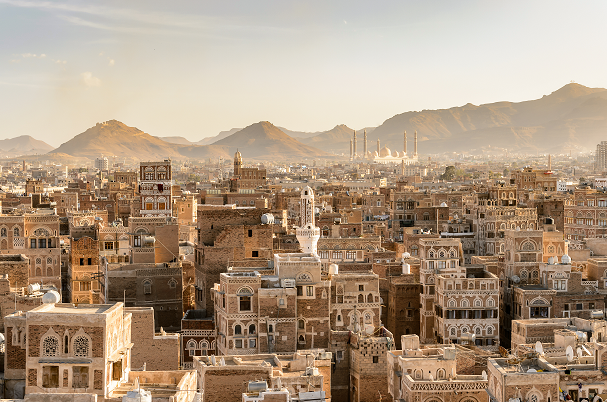
Pre-reading questions:
I will read each question. Then, please answer them.
講師がそれぞれの質問を読むので答えましょう。
- Do you know a famous city?
- Do you use mud in construction in your country?
Vocabulary:
I will read the words, meanings, and sample sentences. Then, repeat after me.
単語、意味、例文を読みます。講師に続いて音読しましょう。
- architect /AHR-ki-tekt/
- ancient /EYN-shuhnt /
- condition /kuhn-DISH-uhn/
- flash flood /flash fluhd/
- heat /heet /
[noun] – a person whose job is to design new buildings and make certain that they are built correctly
The architect checked the building of the mall.
[adjective] – of or from a long time ago, having lasted for a very long time
People have lived in the cave since ancient times.
[noun] – the physical situation that someone or something is in and affected by
Driving conditions are dangerous due to thick fog.
[noun] – a sudden and severe flood
Flash floods were caused by the abnormally heavy rain in a number of mountain towns.
[noun] – the quality of being hot or warm, or the temperature of something
Can you manage to work in this heat without air conditioning?
Article reading:
Please read the whole article. Then, I will check your pronunciation and intonation.
記事を音読しましょう。講師はあなたの発音とイントネーションを確認します。
We can be warm in the winter and cool in the summer while still preventing severe weather thanks to mud buildings. In their effort to create more environmentally friendly homes, architects are returning to this neglected, ancient building material.
Mud towers rise to great heights in Sana’a, Yemen’s historic walled city. Sana’a is a city that has been recognized by Unesco as a World Heritage Site for its unique mud architecture. Even though Sana’a’s structures stretch back thousands of years, according to Salma Samar Damluji, co-founder of the Daw’an Mud Brick Architecture Foundation in Yemen, the majority of the old buildings are still in use as homes and places today.
Architects from all over the world are reviving the use of mud in construction in an effort to create sustainable buildings that can prevent extreme weather conditions like flash floods and extreme heat. Could this outdated architectural style have an impact on the layout of our cities and homes in the future? With this return to the beginning strategy, may the climate crisis be largely resolved?
Mud towers rise to great heights in Sana’a, Yemen’s historic walled city. Sana’a is a city that has been recognized by Unesco as a World Heritage Site for its unique mud architecture. Even though Sana’a’s structures stretch back thousands of years, according to Salma Samar Damluji, co-founder of the Daw’an Mud Brick Architecture Foundation in Yemen, the majority of the old buildings are still in use as homes and places today.
Architects from all over the world are reviving the use of mud in construction in an effort to create sustainable buildings that can prevent extreme weather conditions like flash floods and extreme heat. Could this outdated architectural style have an impact on the layout of our cities and homes in the future? With this return to the beginning strategy, may the climate crisis be largely resolved?
True or False:
Read the sentences and identify if they are true or false based on the article.
文章を読んで、記事に基づいて正誤を答えましょう。
- Sana’a is Yemen’s historic walled city.
- Sana’a is a city that has been recognized by Unesco as a World Heritage Site for its unique mud architecture.
- Salma Samar Damluji is the co-founder of the Daw’an Mud Brick Architecture Fund in Yemen.
- Using mud in construction can prevent extreme weather conditions.
Fill in the blanks:
Choose the correct word from the table then fill in the blanks.
適切な言葉を選んで空欄を埋めましょう。
| architect | ancient | condition | flash flood | heat |
- The sun sends out light and __________.
- The building is the work of an _________.
- Under what __________ do these plants grow best?
- The __________ temple destroyed in the war will be reconstructed soon.
- A __________ flooded the campsite.